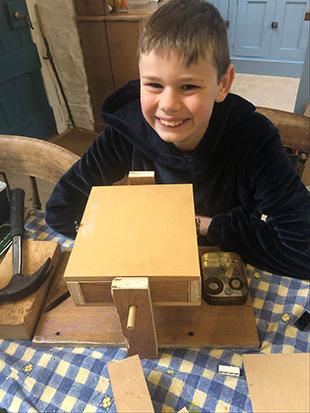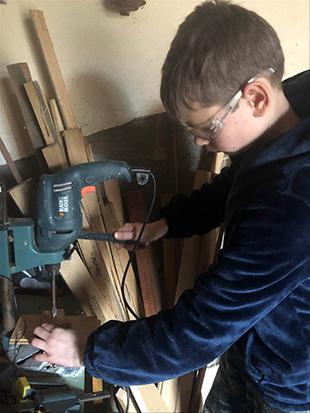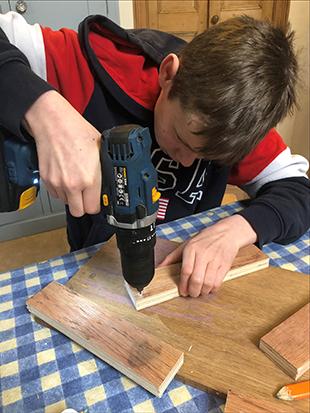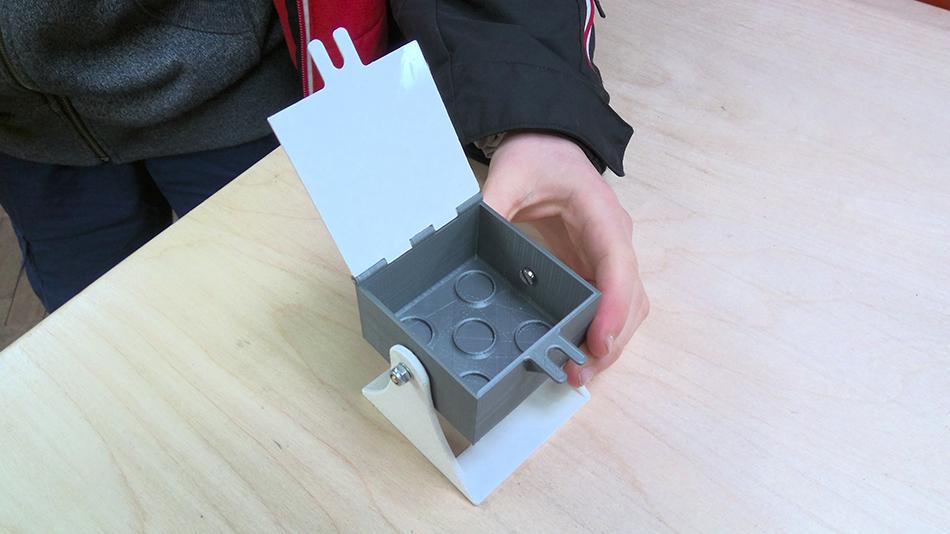Ed Smith, a 12-year-old pupil at Monmouth School for Boys, has invented a device to help the NHS with the process of administering one of the Covid-19 vaccines.Ed, whose prototype can mix 100 vials at one time, was inspired by his GP parents, Peter and Sue Smith, who both work on the NHS frontline in Gloucestershire. Now he is liaising with Monmouth School for Boys’ Design and Technology (DT) Department to make his device a reality using state-of-the-art computer-controlled machines. He’s working on a smaller capacity version to be used in the vaccine clinics because the injections need to be given soon after the mixing occurs. “My parents are both involved with the NHS in the coronavirus vaccine programme,” said Ed, a Year 8 pupil, who enjoys designing and has previously built Roman-style catapults, an e-bike and a soap box car. “They spoke about the difficulties in the vaccination programme because the Pfizer/BioNtech coronavirus vaccine vials need to be inverted, but not shaken, 10 times, in order to mix the vaccine properly before it is administered. I sincerely believe the invention that I have designed can wage war against this awful virus because it will increase the rate that the vaccinators can administer the vaccines to people.” Ed first made a model prototype out of LEGO and then built a working model using pieces of wood at home. He is currently working remotely with Mr Nick Goodson, a teacher in the DT Department at Monmouth School for Boys, who is using the school’s new X-carve Computer Numerical Control (CNC) router and Ultimaker 3D printers to make a series of improving models in pursuit of a device that will actually be used in the vaccination programme. In addition to this project, Ed and Mr Goodson are building a tray, which can be used to transport the Pfizer BioNTech vaccine and needles safely from mixing stations to vaccination tables. “A single vial is worth a lot of money and is also very delicate so the process of transporting the vaccines is very important,” said Ed. “Currently, old polystyrene trays that were used to transport blood test tubes are being used to carry the vaccines across a clinic but I believe we can build something better and more substantial.” Mr Goodson said: “We are proud to be supporting the work of Ed, who has taken on board the need for a product, sketched out his plans, made the device out of LEGO and then built it out of wood in his garage at home. This is exactly the process that we encourage our students to follow at A level and we have had pupils in the past who have brought their own projects into school. However, I cannot remember anyone at the age of 12 who has driven forward a real-time project like this at school using Design and Technology skills." Ed’s mother Sue Smith said: “Each vial only contains five or six doses of the vaccine so a lot of inverting of vials is needed at each clinic. Ed has set out to produce a machine that can invert a number of vials in one go, saving a lot of time and sore wrists, during the clinics.” “I have enjoyed the challenge,' said Ed. "It has given me something to think about in lockdown because I enjoy inventing and making things.” |
 |
 |
 |

